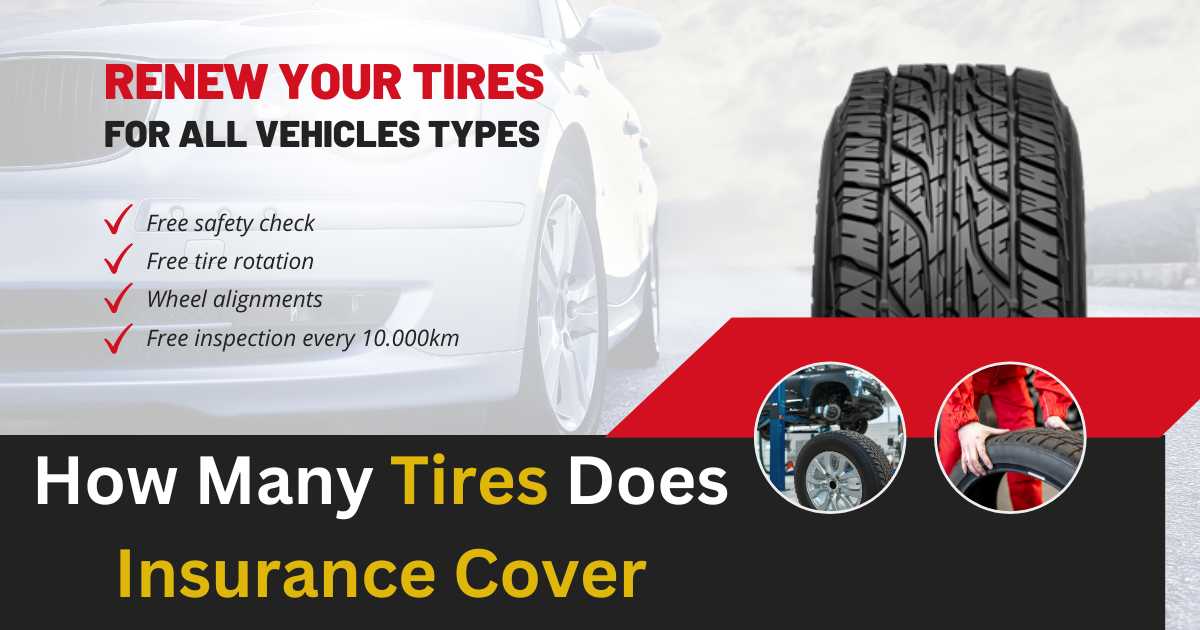How Many Tires Does Insurance Cover: Imagine you’re on a fun road trip, but suddenly, you get a flat tire. It can really ruin your day! But what if the flat tire isn’t your fault? Will your car insurance cover it and get you back on the road smoothly? Well, figuring that out is a bit bike navigating through busy traffic – you need to understand the different types of car insurance coverage.

How Many Tires Does Insurance Cover
Standard Insurance: Designed For Major Collisions, Not Minor Mishaps
Most basic car insurance plans, like liability and collision coverage, are mainly for big stuff like accidents with other cars, theft, or damage from things like storms. They usually don’t cover the everyday wear and tear of driving, such as:
Treadwear: Your tires wear down over time as you drive. Basic insurance won’t pay to replace them just because they’re getting old,
Blowouts: If you hit a big pothole or something sharp on the road and your tire bursts, basic insurance won’t help with that.
Punctures: Things like nails or screws on the road can puncture your tire. You’ll have to deal with fixing these flats yourself with standard insurance.
Expanding Your Coverage: Road Hazard And Tire Protection
If you don’t want to get hit hard in the wallet when unexpected tire problems pop up, think about adding these extra coverages to your car insurance.
Road Hazard Coverage: This is like your hero in shining armor. It pays for fixing or replacing tires damaged by things like potholes or debris on the road that you couldn’t avoid.
Tire Protection: This coverage is even more helpful. It doesn’t just cover road hazards; it might also pay for damage from things like punctures or bulges, and it could even help with normal wear and tear up to a certain point. Basically, it’s like having a safety net for all kinds of tire issues.
How Much Does It Cost To Plug A Tire
Understanding The Policy Wording: Deductibles And Coverage Limits
Even if you add extra coverage, there are still a couple of things to understand fully about your insurance:
Deductible: This is the money you have to pay before your insurance starts helping out. When you’re thinking about road hazard or tire protection, compare how much the deductible costs with how a new tire usually costs.
Coverage Limits: Some policies might have rules about how many times they’ll pay for tire replacements in a year or how much money they’ll give you for each tire.
Making An Informed Decision: Is Additional Coverage Right For You?
Here’s how to figure out if it’s a good idea to get more coverage with road hazard or tire protection:
How Often You Drive: If you drive a lot or often go on bumpy roads, getting tire coverage could be a good idea to keep you protected.
How Much Your Tires Cost: Think about how expensive it would be to replace your tires if something happened to them. If they’re pricey, having coverage can save you money in the long run.
Your Driving Habits: If you often drive in places where there are lots of hazards on the road or if you tend to get flat tires a lot, having extra coverage might be a smart choice to save you from unexpected expenses.
The Final Destination: Making The Right Choice For Your Needs
Wondering how many tires your insurance will pay for? Well, it really depends on what your insurance plan says and if you added any extra coverage. If you know what basic insurance covers and look into things like road hazard or tire protection, you can make sure you won’t be stuck with a flat tire and a big bill. Just remember, making a smart choice now can save you a lot of trouble later on.